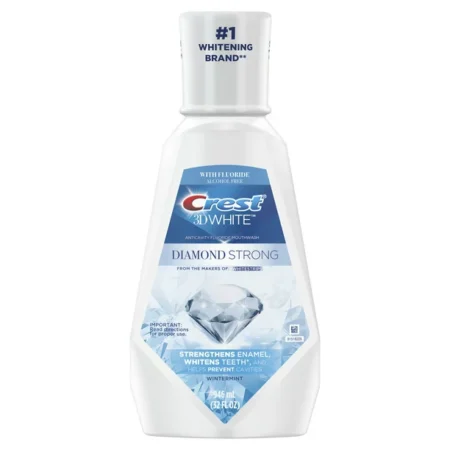A brand-new research study in animal designs reveals that the existence of a cancer growth alone can cause heart damage, and recommends the offenders are particles called totally free radicals engaging with particular cells in the heart.
Growths in mice and fruit flies caused differing degrees of heart dysfunction– especially a reduction in the heart’s blood-pumping abilities.
Including particular kinds of anti-oxidants to food taken in by fruit flies with growths reversed the damage to their hearts– a finding recommending that damage brought on by totally free radicals was the most likely link in between cancer and heart dysfunction.
” Cancer ends up being a systemic illness. It’s not simply a growth doing something,” stated co-lead author Shubha Gururaja Rao, assistant teacher of pharmacology at Ohio Northern University and an accessory professor in physiology and cell biology at The Ohio State University.
The Majority Of what is learnt about cancer’s link to heart damage connects to chemotherapy’s harmful results and muscle losing typically experienced by cancer clients.
This is the very first research study to utilize a hereditary design to examine cancer’s direct result on heart dysfunction. The scientists discovered that various cancer-associated genes impact the heart in various methods– an indication that hereditary details might one day guide heart-protective treatment choices in cancer clients.
” This recommends treatment might be customized if you understand what genes are triggering the cancer or are irregular in particular cancers,” stated Harpreet Singh, co-lead author of the research study and associate teacher of physiology and cell biology at Ohio State.
” Above all else, we wish to make clinicians mindful that upon very first finding cancer, long prior to muscle losing sets in or chemotherapy starts, other organs are getting the message and are being impacted.”
The research study is released in the journal Anti-oxidants
An approximated 50 to 80% of cancer clients establish the muscle losing condition called cachexia, which can cause cardiac arrest, and radiation and chemotherapy treatments are related to toxicity-related damage to the heart muscle.
Nevertheless, emerging research study has actually recommended that heart issues can appear prior to cancer treatment or muscle losing take place. The Ohio State group kept in mind that a research study released just recently in the Journal of the America Heart Association reported the detection of irregularities in heart tissue and heart function in human cancer clients prior to cancer treatment had actually started.
In this brand-new research study, the Ohio State scientists injected breast cancer cells into mouse mammary glands and determined the animals’ heart function 4 weeks later on. They discovered that 2 procedures of heart pumping output, left ventricular ejection portion and fractional reducing, had actually reduced by about 20% and 22%, respectively.
In fruit flies, the group overexpressed cancer-causing genes to set off advancement of growths in the flies’ eyes. The researchers observed considerably lower ejection portion and fractional reducing– comparable to what was seen in mice with growths– in addition to a boost in heart rate in flies with growths.
The scientists discovered a total-body boost in the rate of production in addition to a greater overall variety of totally free radicals– likewise called reactive oxygen types– in fruit flies with growths compared to controls. The rate of reactive oxygen types production was likewise considerably greater in mice with growths compared to controls.
To check whether supplements might reverse the tumor-related heart damage, 4 anti-oxidants were contributed to the fruit flies’ food for 7 days: Glutathione (GSH), vitamin E, CoQ10 or vitamin C.
Outcomes revealed that all however vitamin C brought back the flies’ heart function to regular levels.
” We do not understand yet why one antioxidant works versus another,” stated Rao, including that since the flies consumed the anti-oxidants in their food, scientists likewise do not have conclusive details on the antioxidant dosages at this moment.
She and Singh likewise stressed that reactive oxygen types are simply one recognized system of tumor-related heart damage, which there is still a lot to learn more about how anti-oxidants may suit a treatment routine.
Though this research study zeroed in on one cancer-causing gene to study the system of heart damage in fruit flies, the scientists at first evaluated the results of a number of cancer-causing genes in the flies. The heart function impacted and the strength of the results on the heart differed, depending upon the gene. Rao prepares to continue hereditary research studies in fruit flies and to check anti-oxidants’ corrective results on the hearts in mice with growths.
Singh is teaming up with clinicians at Ohio State and other organizations to gather blood samples from cancer clients who have cardiac arrest.
” The signal is taking a trip from the growth to the heart, and the tissue linking these websites is blood– so the concern is, are reactive oxygen types taking a trip through the blood?” he stated. “On the scientific end, our concern is to try to find the connection in between various oncogenic paths and cardiac arrest. Second, we wish to see what the message is and whether we can recommend anti-oxidants.”
Extra co-authors consist of Priyanka Karekar, Haley Jensen, Kathryn Russart, Devasena Ponnalagu, Shridhar Sanghvi, Sakima Smith and Leah Pyter from Ohio State and Sarah Seeley from Ohio Northern University (ONU).
The work was supported by Commonwealth Universal Research study Improvement Program grants, the W.W. Smith Charitable Trust, the American Heart Association, the National Institutes of Health, Ohio State’s Davis Heart and Lung Research Study Institute, and ONU start-up funds.






